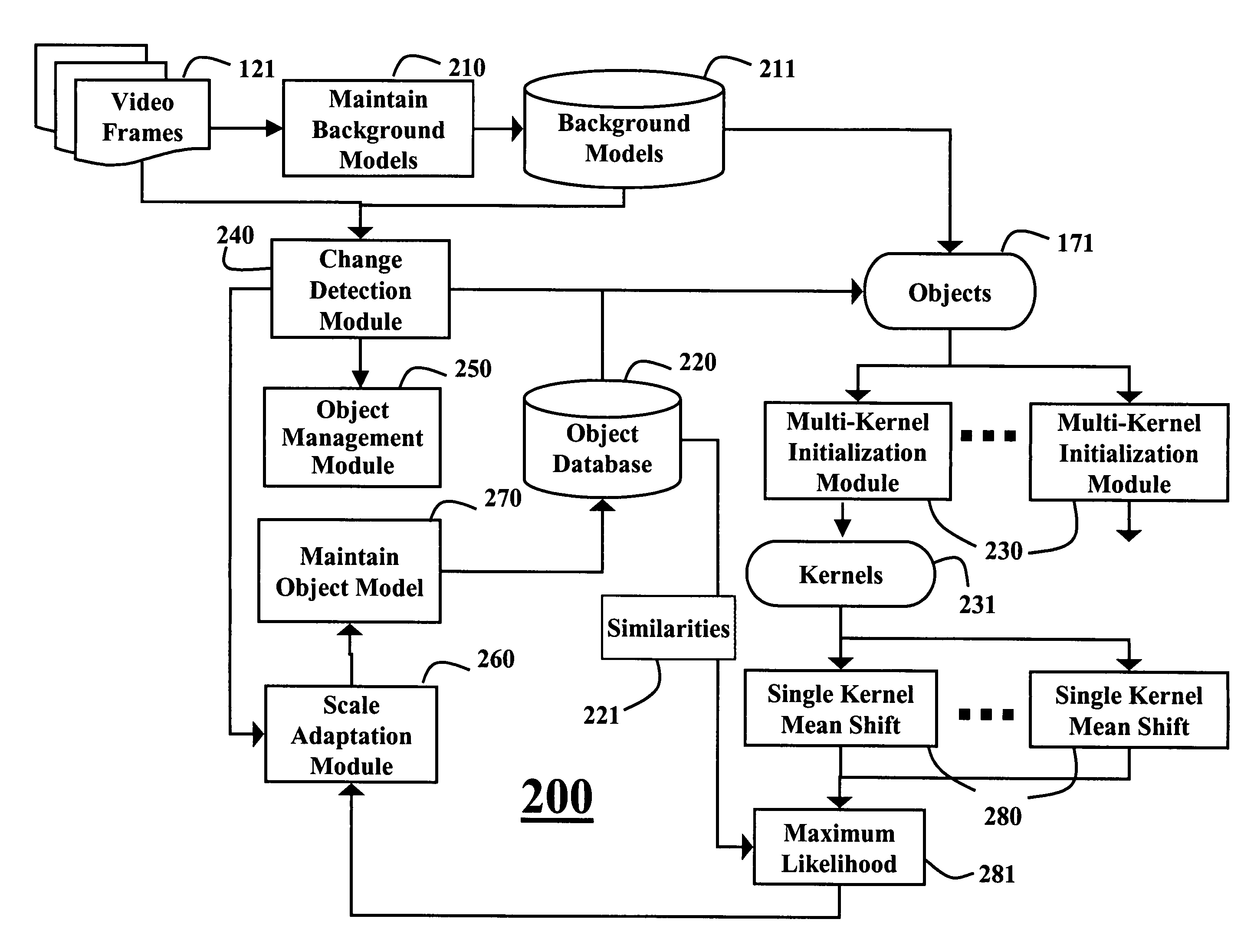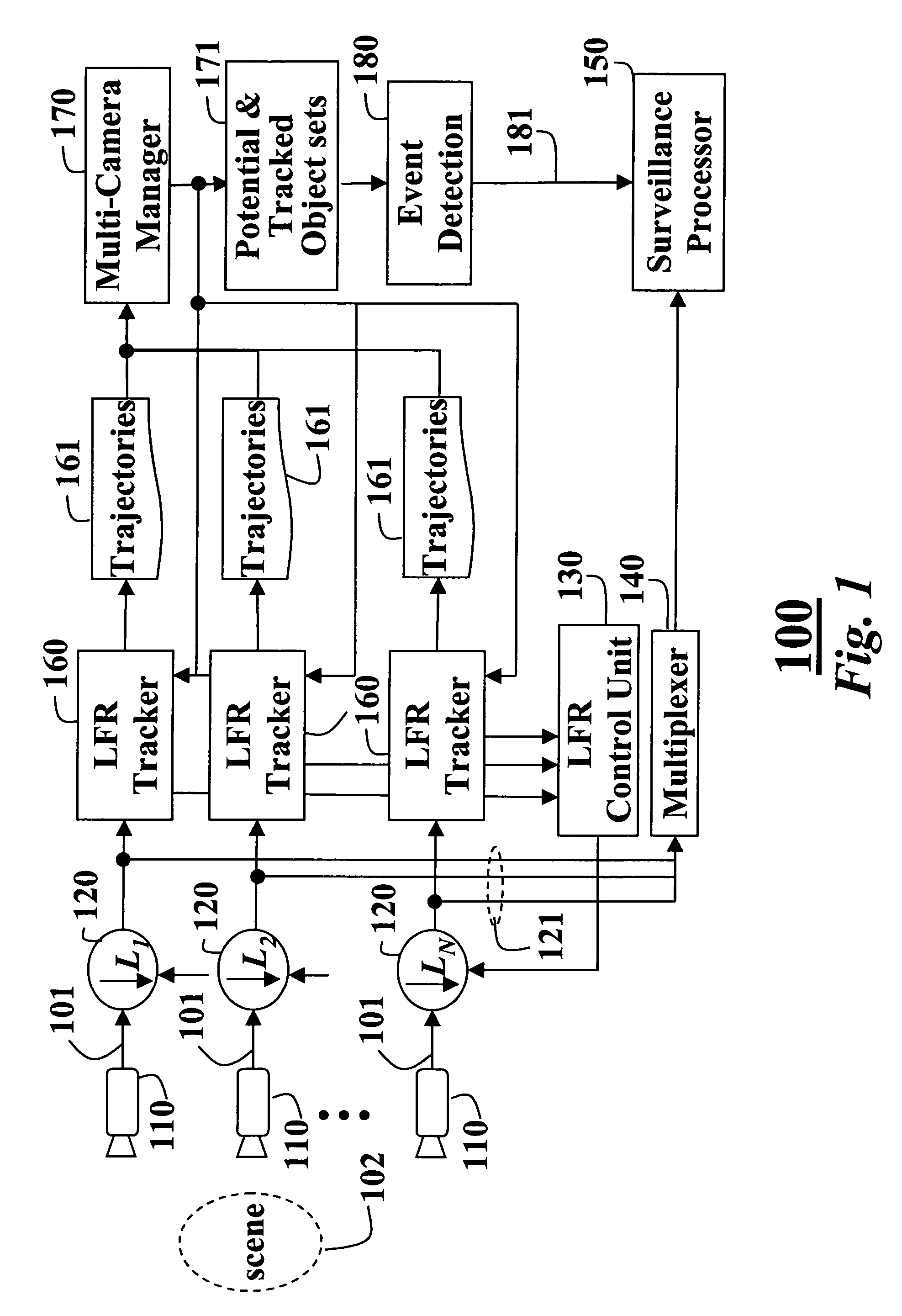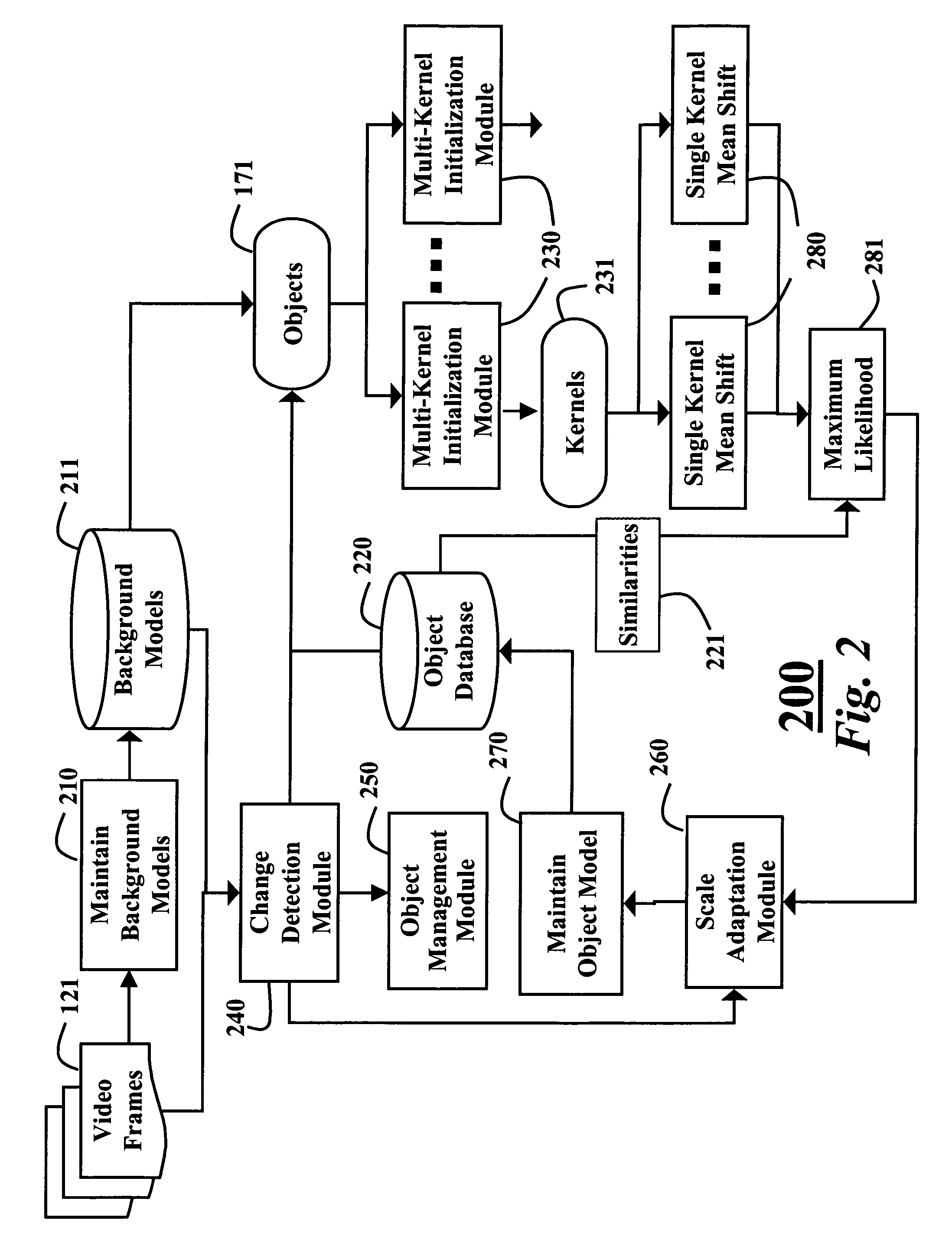Tracking objects in low frame rate videos
a low frame rate, object technology, applied in the field of tracking objects in videos, can solve the problem that the conventional object tracking method cannot be used, and achieve the effect of improving the convergence of the mean-shift process
- Summary
- Abstract
- Description
- Claims
- Application Information
AI Technical Summary
Benefits of technology
Problems solved by technology
Method used
Image
Examples
Embodiment Construction
[0022]System Structure
[0023]As shown in FIG. 1, our invention provides a system and method 100 for tracking objects 171 in a video 101 acquired of a scene 102 by one of a large number of cameras 110, such as in a large scale surveillance system. Conventional cameras are designed to acquire the video at a fixed, relatively high frame rate, e.g., thirty or sixty frames per second (fps).
[0024]In order to reduced the number of required resources, and to improve the processing efficiency, our invention sub-samples 120 frames of the videos. Thus, the videos that are communicated, processed and stored are acquired at a low frame rate (LFR), for example, one frame per second (1 fps), or less. A LFR control unit 130 determines the frame rate. The LFR frames 121 are multiplexed 140 and sent to a surveillance processor 150.
[0025]LFR trackers 160 determine trajectories 161. The LFR trackers also provide feedback to the LFR control unit 130. The trajectories are fed to a multi-camera manager 170...
PUM
 Login to View More
Login to View More Abstract
Description
Claims
Application Information
 Login to View More
Login to View More - R&D
- Intellectual Property
- Life Sciences
- Materials
- Tech Scout
- Unparalleled Data Quality
- Higher Quality Content
- 60% Fewer Hallucinations
Browse by: Latest US Patents, China's latest patents, Technical Efficacy Thesaurus, Application Domain, Technology Topic, Popular Technical Reports.
© 2025 PatSnap. All rights reserved.Legal|Privacy policy|Modern Slavery Act Transparency Statement|Sitemap|About US| Contact US: help@patsnap.com



